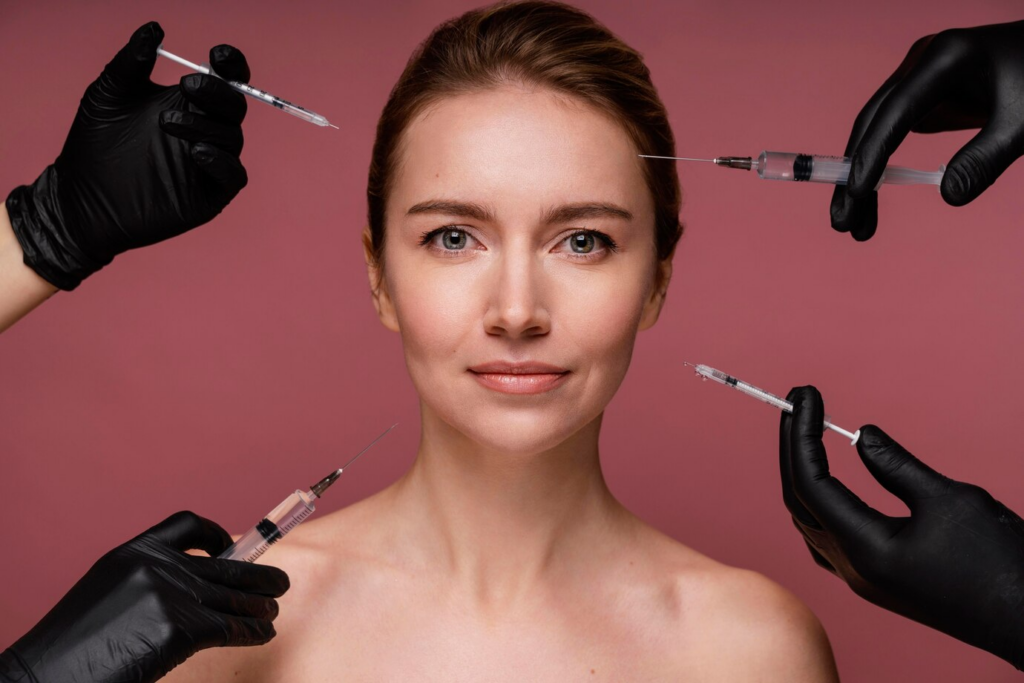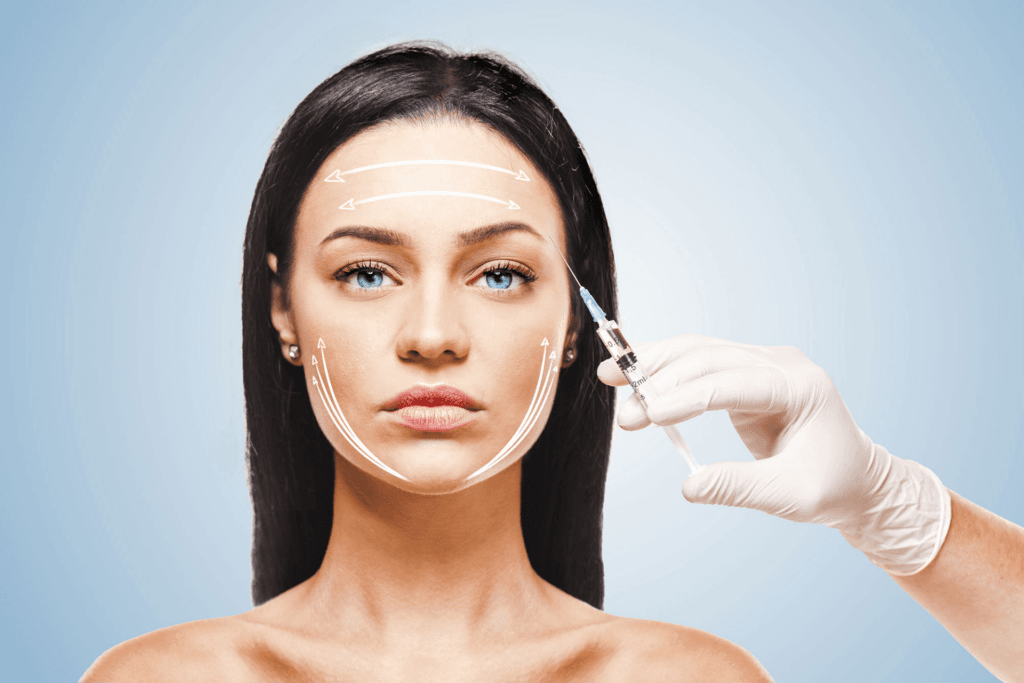Both hyaluronic acid fillers and Botox are popular cosmetic treatments aimed at improving facial appearance, but they address different concerns. Understanding their unique mechanisms and effects is crucial for making an informed decision about which treatment, or combination of treatments, is best suited to individual needs. This article will compare and contrast hyaluronic acid fillers and Botox, helping you navigate the choices available for facial rejuvenation.
Hyaluronic Acid Fillers: What They Do
Hyaluronic acid (HA) fillers are injectable gels composed of hyaluronic acid, a naturally occurring substance in the body that helps retain moisture and provide volume. They work by adding volume to specific areas of the face, effectively smoothing wrinkles and folds, enhancing facial contours, and improving lip fullness. The results are immediately visible and generally last for several months, depending on the product used and individual metabolism.
Different HA fillers are formulated with varying viscosities (thickness) and cross-linking, allowing for targeted treatment of different areas and concerns. Thinner fillers are often used for fine lines and lip augmentation, while thicker fillers are better suited for addressing deeper wrinkles and restoring volume loss in the cheeks or temples. The procedure itself is relatively quick and minimally invasive, typically requiring only topical numbing cream.
Because HA is naturally occurring, the risk of allergic reactions is low. However, some individuals might experience mild side effects such as swelling, bruising, or redness at the injection site, which usually subside within a few days. Should any complications arise, HA fillers are reversible; an enzyme called hyaluronidase can dissolve the filler if necessary.
The longevity of HA filler results varies depending on factors such as the type of filler used, the location of injection, and the individual’s metabolism. While some fillers can last up to a year or more, most require touch-up treatments every six to twelve months to maintain desired results. This makes them a good option for those seeking a more gradual and adjustable approach to facial rejuvenation.

Botox: Understanding Its Effects
Botox, the brand name for onabotulinumtoxinA, is a neurotoxin that temporarily paralyzes muscles by blocking nerve signals. This effect is used cosmetically to reduce the appearance of dynamic wrinkles – wrinkles that form due to repetitive muscle contractions, such as forehead lines, crow’s feet, and frown lines. By relaxing the underlying muscles, Botox prevents these wrinkles from forming, resulting in a smoother, more youthful appearance.
The effects of Botox are gradual, typically becoming noticeable within a few days and reaching full effect within two weeks. The duration of results varies, but generally lasts for three to four months, after which the muscle function gradually returns, and the wrinkles may reappear. Regular treatments are needed to maintain the desired results.
The Botox injection procedure is quick and relatively painless, often involving only a few tiny injections. Potential side effects are generally mild and temporary, including bruising, swelling, and temporary muscle weakness in the treated area. More serious side effects are rare but possible, and careful selection of a qualified and experienced injector is crucial to minimize risks.
Unlike HA fillers, Botox does not add volume. It focuses solely on reducing muscle activity and the wrinkles associated with it. Therefore, it is not effective for addressing wrinkles caused by volume loss or skin laxity. This makes it a highly targeted treatment specifically addressing dynamic wrinkles.
Comparing Filler & Botox Results
The key difference between HA fillers and Botox lies in their mechanism of action and the type of wrinkles they treat. Fillers add volume to plump up the skin and fill wrinkles from underneath, treating both static and dynamic wrinkles. Botox, on the other hand, relaxes the muscles responsible for dynamic wrinkles, preventing their formation. This means they often complement each other rather than compete.
For example, a patient with deep nasolabial folds (smile lines) might benefit from both a filler to add volume and Botox to reduce the muscle activity contributing to their formation. Similarly, someone with crow’s feet and sagging cheeks might benefit from Botox for the crow’s feet and a filler to lift and volumize the cheeks. The choice depends entirely on the individual’s specific concerns and desired outcome.
The longevity of results also differs. Fillers typically last longer than Botox, requiring less frequent treatments. However, the results of both treatments are temporary, requiring repeat injections to maintain the desired effect. The cost per treatment also varies depending on the amount of product used and the area treated.
Ultimately, the best approach is often a personalized treatment plan that combines both fillers and Botox, addressing multiple concerns simultaneously for a more comprehensive and natural-looking result. A consultation with a qualified medical professional is essential to determine the most suitable treatment strategy.
Choosing the Right Treatment for You
Choosing between hyaluronic acid fillers and Botox depends entirely on your individual needs and aesthetic goals. A thorough consultation with a qualified dermatologist or plastic surgeon is the first and most important step. This consultation should involve a discussion of your concerns, medical history, and desired outcome.
The practitioner will assess your skin, identify the underlying causes of your wrinkles or volume loss, and recommend the most appropriate treatment plan. This plan may involve only fillers, only Botox, or a combination of both. High-quality photos are often taken before and after the procedure to track progress and ensure patient satisfaction.
Factors such as your age, skin type, and the severity of your wrinkles will all influence the recommended treatment. For instance, younger individuals with primarily dynamic wrinkles might benefit most from Botox, while older individuals with significant volume loss might benefit more from fillers.
Remember that realistic expectations are crucial. These treatments are designed to improve your appearance, not to create a completely different look. Open communication with your practitioner will ensure you understand the potential benefits, risks, and limitations of each treatment, helping you make an informed decision that aligns with your goals and expectations.
Both hyaluronic acid fillers and Botox are valuable tools in the pursuit of facial rejuvenation, each offering unique benefits and addressing different concerns. The decision of which treatment is best suited for you should be based on a thorough consultation with a qualified medical professional who can assess your individual needs and develop a personalized treatment plan. Understanding the differences between these two popular treatments empowers you to make informed choices and achieve your desired aesthetic results.
Discover the expertise of Dr. Ebru Okyay, your trusted dermatologist in Antalya. Whether you’re looking to address medical skin concerns or enhance your natural beauty with cosmetic treatments, Dr. Okyay is here to help. With personalized care and advanced techniques, achieving your skin goals has never been easier.
